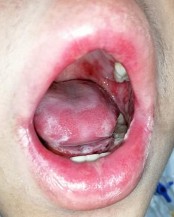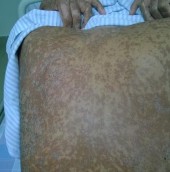unrelated bone marrow or cord bloodtransplantation. Am J Hematol, 92, 171-8.
134. Jonas Mattsson, Olle Ringdén, and Rainer Storb (2008). Graft Failure after Allogeneic Hematopoietic Cell Transplantation. Biol Blood Marrow Transplant, 14, 165-70.
135. Harshabad Singh, Sarah Nikiforow, Shuli Li, et al. (2014). Outcomes and management strategies for graft failure after umbilical cord blood transplantation. Am J Hematol, 89, 1097–101.
136. Majed M. Hamawy (2003). Molecular Actions of Calcineurin Inhibitors. Drug News Perspect, 16, 277.
137. Ron Ram, Barry Storer, Marco Mielcarek, et al. (2012). Association between calcineurin inhibitor blood concentrations and outcomes after allogeneic hematopoietic cell transplantation. Biol Blood Marrow Transplant, 18, 414-22.
138. Saurabh Chhabra, Ying Liu, Michael T. Hemmer, et al. (2019). Comparative analysis of calcineurin-inhibitor-based methotrexate and mycophenolate mofetil-containing regimens for prevention of Graft- versus-Host Disease after reduced intensity conditioning allogeneic transplantation. Biol Blood Marrow Transplant, 25, 73-85.
139. E Yokohata, Y Kuwatsuka, H Ohashi, et al. (2017). Impact of T-cell chimerism on relapse after cord blood transplantation for hematological malignancies: Nagoya Blood and Marrow Transplantation Group study. Bone Marrow Transplantation, 52, 612-4.
140. Takaaki Konuma, Seiko Kato, Maki Oiwa-Monna, et al. (2017). Cryopreserved CD34+ Cell Dose, but Not Total Nucleated Cell Dose, Influences Hematopoietic Recovery and Extensive Chronic Graft- versus-Host Disease after Single-Unit Cord Blood Transplantation in Adult Patients. Biol Blood Marrow Transplant, 23, 1142-50.
141. Kathleen A Linder, Philip J McDonald, Carol A Kauffman, et al. (2019). Infectious Complications After Umbilical Cord Blood Transplantation for Hematological Malignancy. Open Forum Infectious Diseases, 6, 1-8.
142. O Ringden, M Remberger, V Runde, et al. (2000). Faster engraftment of neutrophils and platelets with peripheral blood stem cells from unrelated donors: a comparison with marrow transplantation. Bone Marrow Transplantation, 25, S6-8.
143. Federico Moscardó, Jaime Sanz, Leonor Senent, et al. (2009). Impact of hematopoietic chimerism at day +14 on engraftment after unrelated donor umbilical cord blood transplantation for hematologic malignancies. Haematologica, 94, 827-32.
144. Marks DI, Woo KA, Zhong X, et al. (2014). Unrelated umbilical cord blood transplant for adult acute lymphoblastic leukemia in first and
second complete remission: a comparison with allografts from adult unrelated donors. Haematologica, 99, 322-8.
145. Masatsugu Tanaka, Koichi Miyamura, Seitaro Terakura, et al. (2015). Comparison of Cord Blood Transplantation with Unrelated Bone Marrow Transplantation in Patients Older than Fifty Years. Biol Blood Marrow Transplant, 21, 517-25.
146. Vanderson Rocha, Federico Gamier, Irina lonescu, et al. (2005). Hematopoietic stem–cell transplantation using umbilical–cord blood cells. Rev. invest. clín, 57,
147. Mary Eapen, Pablo Rubinstein, Mei-Jie Zhang, et al. (2006). Comparable Long-Term Survival After Unrelated and HLA-Matched Sibling Donor Hematopoietic Stem Cell Transplantations for Acute Leukemia in Children Younger Than 18 Months. J Clin Oncol 24, 145- 51.
148. Nguyễn Bá Khanh, Trần Ngọc Quế, Lê Xuân Hải, et al. (2015). Kết quả ứng dụng kỹ thuật xét nghiệm HLA trong tìm kiếm nguồn tế bào gốc phục vụ ghép. Y học Việt Nam, 429, 188-94.
149. Juliet N. Barker, Joanne Kurtzberg, Karen Ballen, et al. (2017). Optimal Practices in Unrelated Donor Cord Blood Transplantation for Hematologic Malignancies. Biol Blood Marrow Transplant, 23, 882- 96.
150. Rocha V, Cornish J, and Sievers E (2001). Comparison of outcomes of unrelated bone marrow and umbilical-cord blood transplants in children with acute leukemia. Blood, 97, 2962-71.
151. Rocío Parody, Rodrigo Martino, Montserrat Rovira, et al. (2006). Severe Infections after Unrelated Donor Allogeneic Hematopoietic Stem Cell Transplantation in Adults: Comparison of Cord Blood Transplantation with Peripheral Blood and Bone Marrow Transplantation. Biol Blood Marrow Transplant, 12, 734-48.
152. Juan Montoro, José Luis Piđana, Federico Moscardó, et al. (2016). Infectious Complications after Umbilical Cord-Blood Transplantation from Unrelated Donors. Mediterr J Hematol Infect Dis 8, e2016051.
153. P. Stiff (2001). Mucositis associated with stem cell transplantation: current status and innovative approaches to management. Bone Marrow Transplantation, 27, S3-11.
154. Kaoana Lima and Elizabeth Bernardino (2014). Nursing care in a hematopoietic stem cells transplantation unit. Text Context Nursing, Florianópolis, 23, 845-53.
155. Zhiquan Shu, Shelly Heimfeld, and Dayong Gao (2014). Hematopoietic Stem Cell Transplantation with Cryopreserved Grafts: Adverse Reactions after Transplantation and Cryoprotectant Removal Prior to Infusion. Bone Marrow Transplantation, 49, 469-79.
156. Donmez A, Tombuloglu M, Gungor A, et al. (2007). Clinical side effects during peripheral blood progenitor cell infusion. Transfus Apher Sci, 36, 95-101.
157. Kathlyn Hornberger, Guanglin Yu, and Allison Hubel (2019). Cryopreservation of Hematopoietic Stem Cells: Emerging Assays, Cryoprotectant Agents, and Technology to Improve Outcomes. Transfus Med Hemother, 46, 188–96.
158. TH Truong, R Moorjani, D Dewey, et al. (2016). Adverse reactions during stem cell infusion in children treated with autologous and allogeneic stem cell transplantation. Bone Marrow Transplantation, 51, 680–6.
159. Xavier Cahu, Fanny Rialland, Cyrille Touzeau, et al. (2009). Infectious Complications after Unrelated Umbilical Cord Blood Transplantation in Adult Patients with Hematologic Malignancies. Biol Blood Marrow Transplant, 15, 1531-7.
160. Junya Kanda, Yoshiko Atsuta, Atsushi Wake, et al. (2013). Impact of the Direction of HLA Mismatch on Transplantation Outcomes in Single Unrelated Cord Blood Transplantation. Biol Blood Marrow Transplant, 19, 247-54.
161. R Cunha, P Loiseau, A Ruggeri, et al. (2014). Impact of HLA mismatch direction on outcomes after umbilical cord blood transplantation for hematological malignant disorders: a retrospective Eurocord-EBMT analysis. Bone Marrow Transplantation, 49, 24-9.
162. Yoshiko Atsuta, Yasuo Morishima, Ritsuro Suzuki, et al. (2012). Comparison of Unrelated Cord Blood Transplantation and HLA- Mismatched Unrelated Bone Marrow Transplantation for Adults with Leukemia. Biol Blood Marrow Transplant, 18, 780-7.
163. Mukta Arora, John P. Klein, Daniel J. Weisdorf, et al. (2011). Chronic GVHD risk score: a Center for International Blood and Marrow Transplant Research analysis. Blood, 117, 6714-20.
164. M Arora, J Pidala, C S Cutler, et al. (2013). Impact of Prior Acute GVHD on Chronic GVHD Outcomes: a Chronic Graft versus Host Disease Consortium Study. Leukemia, 27, 1196-201.
165. Pavan Reddy (2003). Pathophysiology of acute graft-versus-host disease. Hematol Oncol, 21, 149-61.
166. Gérard Socié and Jerome Ritz (2014). Current issues in chronic graft- versus-host disease. Blood, 124, 374-84.
167. Cladd E. Stevens, Carmelita Carrier, Carol Carpenter, et al. (2011). HLAmismatch direction in cord blood transplantation: impact on outcome and implications for cord blood unit selection. Blood, 118, 3969-78.
168. U Sobol, A Go, S Kliethermes, et al. (2015). A prospective investigation of cell dose in single-unit umbilical cord blood transplantation for adults with high-risk hematologic malignancies. Bone Marrow Transplantation, 50, 1519-25.
169. Daniel Furst, Christine Neuchel, Chrysanthi Tsamadou, et al. (2019). HLA Matching in Unrelated Stem Cell Transplantation up to Date. Transfus Med Hemother, 46, 326-36.
170. Kollman C, Klein JP, and Spellman SR (2013). The effect of donor characteristics on graft vs.host disease (GVHD) and survival after unrelated donor transplantation for hematologic malignancy Biol Blood Marrow Transplant, 19, S146-7.
171. Joanne Kurtzberg, Vinod K. Prasad, Shelly L. Carter, et al. (2008). Results of the Cord Blood Transplantation Study (COBLT): clinical outcomes of unrelated donor umbilical cord blood transplantation in pediatric patients with hematologic malignancies. Blood, 112, 4318-27.
172. Trần Ngọc Quế, Nguyễn Bá Khanh, Nguyễn Thị Thu Hường, et al. (2017). Nghiên cứu đánh giá chất lượng tế bào gốc máu dây rốn được lưu trữ tại Viện Huyết học – Truyền máu TW (5/2014-12/2016). Y học Việt Nam, 453, 321-9.
173. Michael R. Verneris, Claudio G. Brunstein, Juliet Barker, et al. (2009). Relapse risk after umbilical cord blood transplantation: enhanced graft- versus-leukemia effect in recipients of 2 units. Blood, 114, 4293-9.
174. Gert J. Ossenkoppele, Jeroen J.W.M. Janssen, and Arjan A. van de Loosdrecht (2016). Risk factors for relapse after allogeneic transplantation in acute myeloid leukemia. Haematologica, 101, 20-5.
175. Craig E. Eckfeldt, Nicole Randall, Ryan M. Shanley, et al. (2016). Umbilical cord blood transplantation is a suitable option for consolidation of acute myeloid leukemia with FLT3-ITD. Haematologica, 101, 348-51.
176. Abhinav Deol, Salyka Sengsayadeth, Kwang Woo Ahn, et al. (2016). Does FLT3 Mutation Impact Survival after Hematopoietic Cell Transplant for AML? A CIBMTR Analysis. Cancer, 122, 3005-14.
177. Zhi Guo, Chen Xu, and Hu Chen (2018). Allogeneic hematopoietic stem cell transplantation for relapsed acute myeloid leukemia in ETO positive with reduced-intensity conditioning. Oncotarget, 9, 524-38.
178. H Shiozaki, K Yoshinaga, T Kondo, et al. (2013). Donor cell-derived leukemia after cord blood transplantation and a review of the literature: differences between cord blood and BM as the transplant source. Bone Marrow Transplantation, 49, 102-9.
179. Wiemels JL, Xiao Z, Buffler PA, et al. (2002). In utero origin of t(8;21) AML1-ETO translocations in childhood acute myeloid leukemia. Blood, 99, 3801-5.
180. Rodríguez-Macías G, Martínez-Laperche C, Gayoso J, et al. (2013). Mutation of the NPM1 gene contributes to the development of donor cell-derived acute myeloid leukemia after unrelated cord blood transplantation for acute lymphoblastic leukemia. Hum Pathol, 44,
181. K Chonabayashi, T Kondo, K Yamamoto, et al. (2012). Successful use of second cord blood transplantation to achieve long-term remission in cord blood donor cell-derived AML harboring a FLT3-ITD and an NPM1 mutation. Bone Marrow Transplantation, 47, 1252-3.
182. Rosenberg AR, Syrjala KL, and Martin PJ (2015). Resilience, health, and quality of life among long-term survivors of hematopoietic cell transplantation. Cancer, 121, 4250-7.
183. Bitan M, Ahn KW, and Millard HR (2017). Personalized prognostic risk score for long-term survival for children with acute leukemia after allogeneic transplantation. Biol Blood Marrow Transplant, 23, 1523- 30.
184. Yi-Bin Chen, Tao Wang, Michael T. Hemmer, et al. (2017). GVHD after umbilical cord blood transplantation for acute leukemia: an analysis of risk factors and effect on outcomes. Bone Marrow Transplantation, 52, 400-8.
185. Raynier Devillier, Samia Harbi, Sabine Fürst, et al. (2014). Poor Outcome with Nonmyeloablative Conditioning Regimen before Cord Blood Transplantation for Patients with High-Risk Acute Myeloid Leukemia Compared with Matched Related or Unrelated Donor Transplantation. Biol Blood Marrow Transplant, 20, 1560-5.
186. Vanderson Rocha and Eliane Gluckman (2009). Improving outcomes of cord blood transplantation: HLA matching, cell dose and other graft- and transplantation-related factors. BJH, 147, 262-74.
187. Nicolas Blin, Richard Traineau, Stephanie Houssin, et al. (2010). Impact of Donor-Recipient Major ABO Mismatch on Allogeneic Transplantation Outcome According to Stem Cell Source. Biol Blood Marrow Transplant, 16, 1315-23.
188. Benjamin RJ, McGurk S, Ralston MS, et al. (1999). ABO incompatibility as an adverse risk factor for survival after allogeneic bone marrow transplantation. Transfusion, 39, 179–87.
189. Kimura F, Sato K, Kobayashi S, et al. (2008). Impact of AB0-blood group incompatibility on the outcome of recipients of bone marrow transplants from unrelated donors in the Japan Marrow Donor Program. haematologica, 93, 1686-93.
190. Michallet M, Le QH, Mohty M, et al. (2008). Predictive factors for outcomes after reduced intensity conditioning hematopoietic stem cell transplantation for hematological malignancies: a 10-year retrospective
analysis from the Société Française de Greffe de Moelle et de Thérapie Cellulaire. . Exp Hematol 36, 535–44.
191. Oksana Prokopchuk-Gauk, Joanna McCarthy, Peter Duggan, et al. (2016). Impact of ABO Incompatibility on Engraftment in Allogeneic Hematopoietic Stem Cell Transplantation. Blood, 128, 3394.
192. Maura Faraci, Francesca Bagnasco, Massimiliano Leoni, et al. (2018). Evaluation of Chimerism Dynamics after Allogeneic Hematopoietic Stem Cell Transplantation in Children with Nonmalignant Diseases. Biol Blood Marrow Transplant, 24, 1088-102.
193. Franco Locatelli, Alessandro Crotta, Annalisa Ruggeri, et al. (2013). Analysis of risk factors influencing outcomes after cord blood transplantation in children with juvenile myelomonocytic leukemia: a EUROCORD, EBMT, EWOG-MDS, CIBMTR study. Blood, 122, 2135-41.
194. Gahrton G (2007). Risk assessment in haematopoietic stem cell transplantation: impact of donor-recipient sex combination in allogeneic transplantation. Best Pract Res Clin Haematol, 20, 219-29.
195. Yang Y Sahaf B, Arai S, Herzenberg LA, Herzenberg LA, Miklos DB (2013). H-Y antigenbinding B cells develop in male recipients of female hematopoietic cells and associate with chronic graft vs host disease. Proc Natl Acad Sci USA 110, 3005–10.
196. Hui KM Feng X, Younes HM, Brickner AG. (2008). Targeting minor histocompatibility antigens in graft versus tumor or graft versus leukemia responses. Trends Immunol, 29, 624-32.
197. Frédéric Baron, Myriam Labopin, Annalisa Ruggeri, et al. (2015). Unrelated cord blood transplantation for adult patients with acute myeloid leukemia: higher incidence of acute graft-versus-host disease and lower survival in male patients transplanted with female unrelated cord blood—a report from Eurocord, the Acute Leukemia Working Party, and the Cord Blood Committee of the Cellular Therapy and Immunobiology Working Party of the European Group for Blood and Marrow Transplantation. Journal of Hematology & Oncology, 8, 1-11.
198. Jonathan A Gutman, Wendy Leisenring, Frederick R Appelbaum, et al. (2009). Low relapse without excessive transplant related mortality following myeloablative cord blood transplantation for acute leukemia in complete remission: a matched cohort analysis. Biol Blood Marrow Transplant, 15, 1122-9.
199. Annette B. Kraus, Juanita Shaffer, Han Chong Toh, et al. (2003). Early host CD8 T-cell recovery and sensitized anti-donor interleukin-2– producing and cytotoxic T-cell responses associated with marrow graft rejection following nonmyeloablative allogeneic bone marrow transplantation. IMMUNOBIOLOGY, 31, 609-21.
200. V. Bueno and J.O.M. Pestana (2002). The role of CD8+ T cells during allograft rejection. Brazilian Journal of Medical and Biological Research, 35, 1247-59.
201. Katharina Fleischhauer, Elisabetta Zino, Benedetta Mazzi, et al. (2001). Peripheral blood stem cell allograft rejection mediated by CD41 T lymphocytes recognizing a single mismatch at HLA-DPb1*0901. Blood, 98, 1122-6.
202. Soiffer RJ1, Mauch P, Tarbell NJ, et al. (1991). Total lymphoid irradiation to prevent graft rejection in recipients of HLA non-identical T cell-depleted allogeneic marrow. Bone Marrow Transplantation, 7, 23-33.
203. Andrea Bacigalupo (2017). Antithymocyte globulin and transplants for aplastic anemia. haematologica, 102, 1137-8.
204. Coco de Koning, Stefan Nierkens, and Jaap Jan Boelens (2016). Strategies before, during, and after hematopoietic cell transplantation to improve T-cell immune reconstitution. Blood, 128, 2607-15.
205. Yunsuk Choi, Ho Sup Lee, Je-Hwan Lee, et al. (2016). The Impact of Antithymocyte Globulin (ATG) Dose in Allogeneic Hematopoietic Stem Cell Transplantation with HLA Mismatched Donors. Blood, 128, 3393.
PHỤ LỤC
MỘT SỐ HÌNH ẢNH MINH HỌA KẾT QUẢ NGHIÊN CỨU
B |
Có thể bạn quan tâm!
-
 Vai Trò Của Yếu Tố Giới Tính Và Kết Quả Ghép Tbg Đồng Loài
Vai Trò Của Yếu Tố Giới Tính Và Kết Quả Ghép Tbg Đồng Loài -
 Kết Quả Ghép Tế Bào Gốc Từ Máu Dây Rốn Điều Trị Bệnh Lơ Xê Mi
Kết Quả Ghép Tế Bào Gốc Từ Máu Dây Rốn Điều Trị Bệnh Lơ Xê Mi -
 Nghiên cứu điều trị bệnh lơ xê mi bằng ghép tế bào gốc từ Ngân hàng máu dây rốn cộng đồng tại Viện Huyết học - Truyền máu Trung ương - 20
Nghiên cứu điều trị bệnh lơ xê mi bằng ghép tế bào gốc từ Ngân hàng máu dây rốn cộng đồng tại Viện Huyết học - Truyền máu Trung ương - 20 -
 Nghiên cứu điều trị bệnh lơ xê mi bằng ghép tế bào gốc từ Ngân hàng máu dây rốn cộng đồng tại Viện Huyết học - Truyền máu Trung ương - 22
Nghiên cứu điều trị bệnh lơ xê mi bằng ghép tế bào gốc từ Ngân hàng máu dây rốn cộng đồng tại Viện Huyết học - Truyền máu Trung ương - 22
Xem toàn bộ 179 trang tài liệu này.
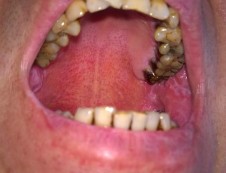
Hình 1. Hình ảnh tổn thương niêm mạc do phác đồ điều kiện hóa
A | B |
Hình 2. Hình ảnh bệnh ghép chống chủ cấp ở da (A) và niêm mạc (B)
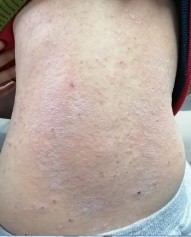
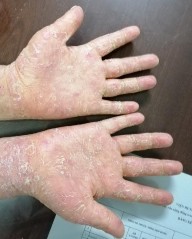
Hình 10. Hình ảnh tổn thương da do bệnh ghép chống chủ mạn

